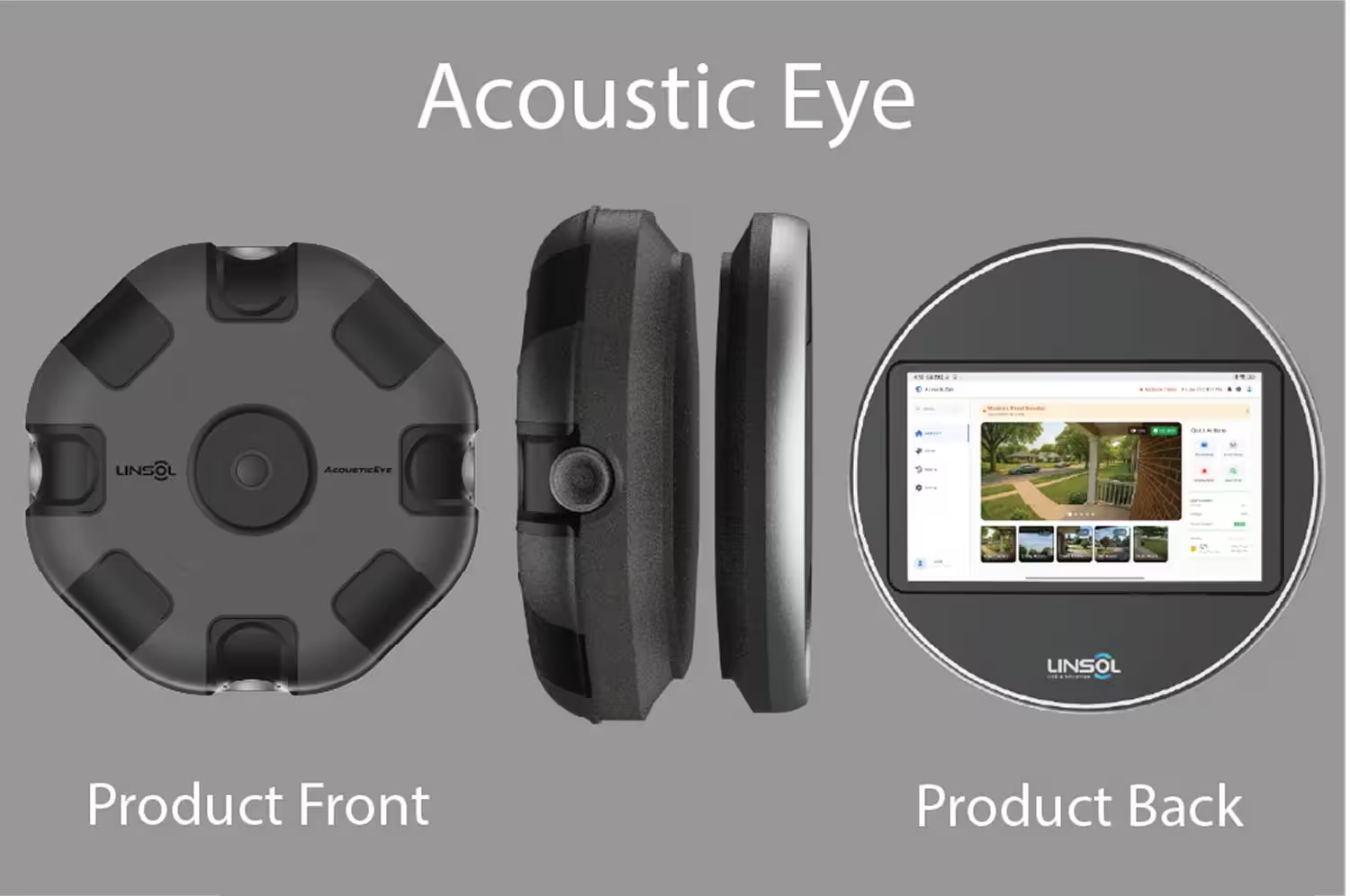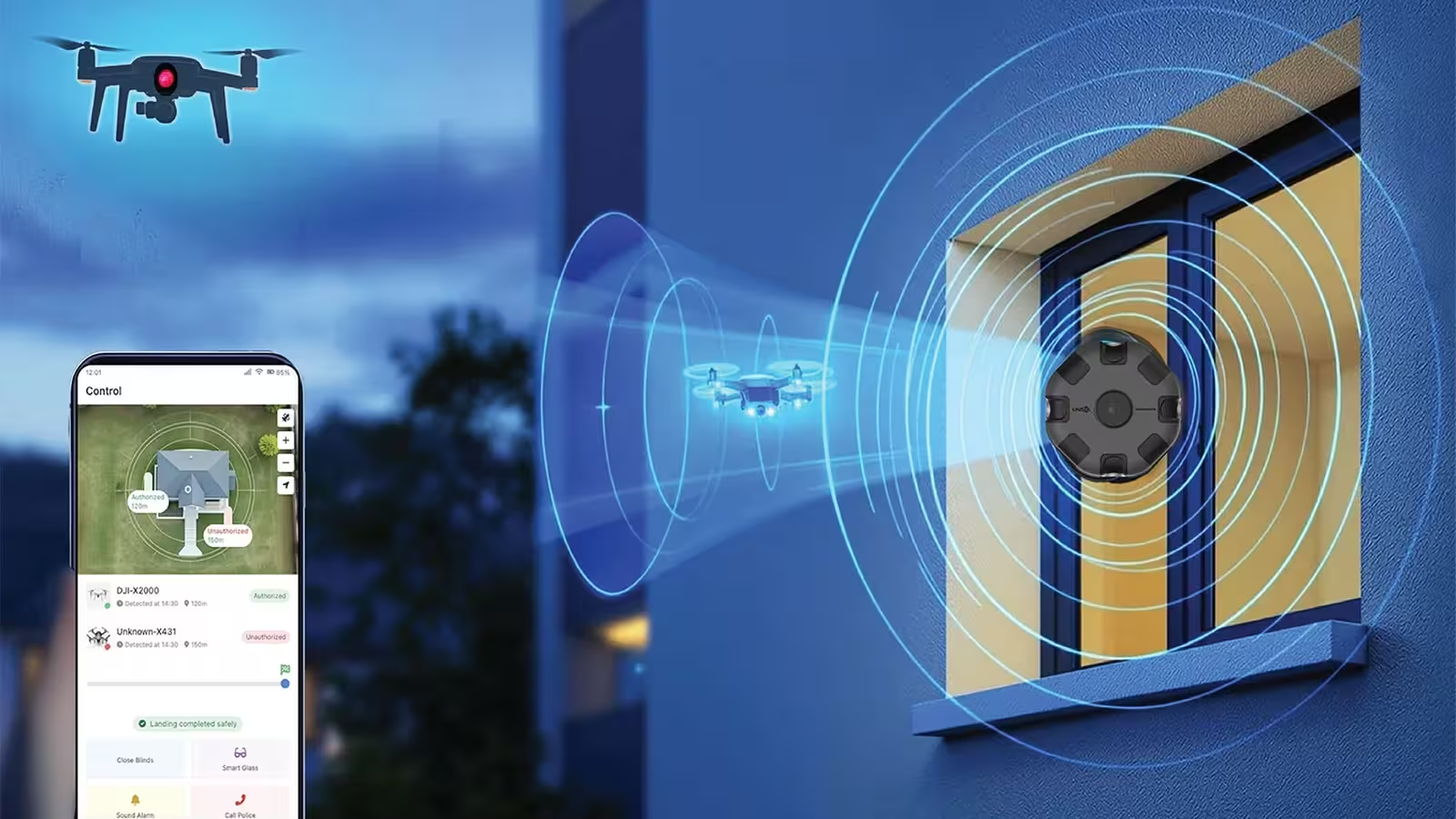4 Minutes
Listening Beyond Limits: How Acoustic Eye is Changing the Security Landscape
Unseen threats—whether in the form of stealthy drones invading the skies over hospitals and schools, or undetected mechanical faults on factory floors—pose critical risks to safety and security in modern environments. Traditional security technologies like cameras and radar often leave crucial blind spots, especially when it comes to detecting small, fast-moving threats or subtle audio cues lost amidst background noise.
Acoustic Eye’s Precision Approach to Hazard Detection
Acoustic Eye, developed by South Korean startup LINSOL, introduces a breakthrough in security technology by utilizing sophisticated sound-based detection. Unlike standard acoustic sensors, which typically struggle to filter out faint signals in noisy domains and have limited range, Acoustic Eye harnesses an advanced multi-channel sensor array to capture both ultrasonic and audible frequencies. This allows for the identification of threats—like miniature drones barely larger than hummingbirds—at distances of up to 500 yards, even in noise-heavy urban or industrial environments.
Innovative Installation and User-Friendly Design
One standout feature of Acoustic Eye is its hassle-free, tool-free installation. The device mounts securely to any window in seconds thanks to a proprietary magnetic system, requiring no drilling or permanent alterations. This seamless setup ensures immediate operational readiness, making it accessible for both private residences and high-security facilities. The combination of powerful yet safe magnets ensures the system remains firmly attached while leaving no trace once removed.

Cutting-Edge Technologies Powering Acoustic Eye
At the heart of Acoustic Eye’s effectiveness is a convergence of several advanced audio processing technologies:
- Multi-Channel Sensor Array: Captures and triangulates sound from numerous directions, ensuring localizable and reliable identification of even the smallest drones or mechanical anomalies.
- AI-Powered Selective Beamforming: Employs artificial intelligence to isolate the acoustic signatures of unauthorized drones or vehicles by filtering out ambient noise—enabling real-time threat distinction without false positives.
- Meta-Structure Sound Amplification: This patented system amplifies otherwise imperceptible acoustic signals up to eightfold, dramatically extending detection capability and allowing for the interception of even low-noise or stealth craft before they breach protected airspace.
Furthermore, Acoustic Eye instantly notifies users through indoor displays or connected mobile apps when anomalies are detected, and can automatically trigger countermeasures such as drone jamming protocols to neutralize threats.
How Acoustic Eye Compares to Traditional Counter-Drone Systems
Conventional methods for drone and hazard detection—Doppler radar, radio frequency (RF) monitoring, and video cameras—are increasingly being circumvented by rapidly evolving threat technologies. Radar often fails to distinguish between small drones and birds, resulting in high false alarm rates. RF analyzers can’t spot drones operating autonomously or using advanced signal-masking techniques. Visual cameras require consistent lighting and unobstructed views, rendering them ineffective in low visibility conditions like fog, heavy rain, or darkness.
Even integrated sensor-fusion systems that mix radar, RF, and video cannot always close the detection gap quickly enough when response time is critical. Acoustic Eye fills this gap by leveraging the universal and continuous nature of sound. Its creators claim the system delivers reliable 24/7 hazard detection, no matter the weather or lighting conditions, extending security coverage where other solutions fall short.
Expanding Use Cases: From Industrial Safety to Urban Airspace
The versatility of Acoustic Eye positions it for a wide spectrum of applications. In industrial settings, it can identify the early sounds of mechanical stress in vehicles or structures, reducing the risk of accidents and costly operational downtime. In urban and institutional environments—such as schools, hospitals, and government buildings—it acts as a proactive shield against unauthorized drone incursions, thereby enhancing privacy and safeguarding sensitive locations.
Seamless Integration and Scalable Security
LINSOL is actively developing standard interfaces and software modules that allow Acoustic Eye to pair effortlessly with existing security infrastructure worldwide. This means facility managers can view sound-based alerts alongside surveillance video, access logs, and alarm triggers within a unified platform. By providing straightforward upgrade pathways, Acoustic Eye enables organizations to enhance their security toolkit with minimal disruption or retraining requirements.
Market Impact and Future Prospects
Launched as the first in-house venture of Hanwha Aerospace in 2021 and spun off as an independent enterprise in 2023, Daejeon-based LINSOL is redefining how the world approaches situational awareness. By adapting defense-grade acoustic detection and sonar technology for civilian use, LINSOL is pushing the envelope in fields like industrial safety, search and rescue, smart mobility, and airspace security.
With its motto, “Hearing the Invisible, Protecting the Invaluable,” the company stands at the forefront of a new era in digital security technology—one where sound becomes a primary, actionable layer of intelligence.
As emerging threats continue to outpace traditional countermeasures, Acoustic Eye’s proactive, defense-level capabilities and intuitive deployment promise to make “listening” an indispensable pillar of modern security strategies worldwide.
Source: ubergizmo



Comments